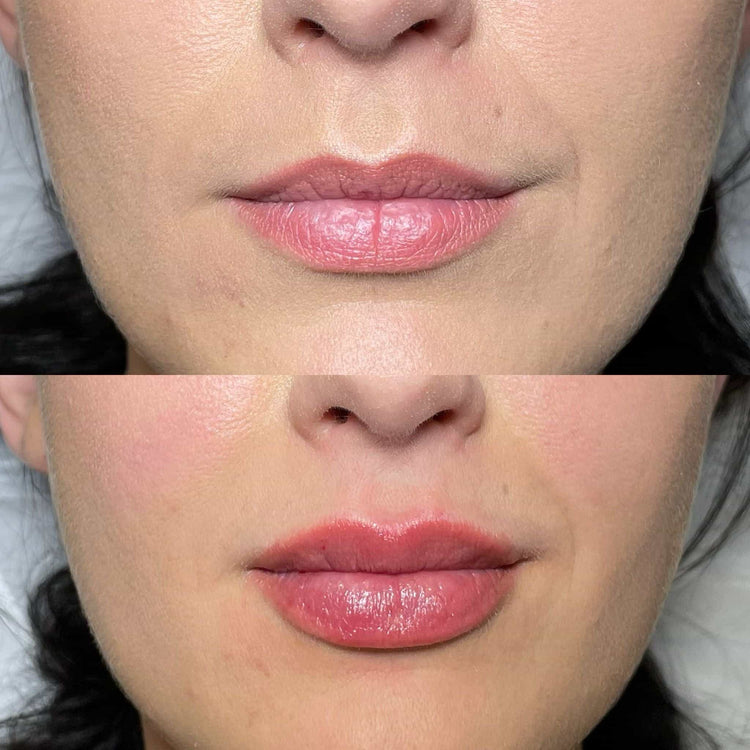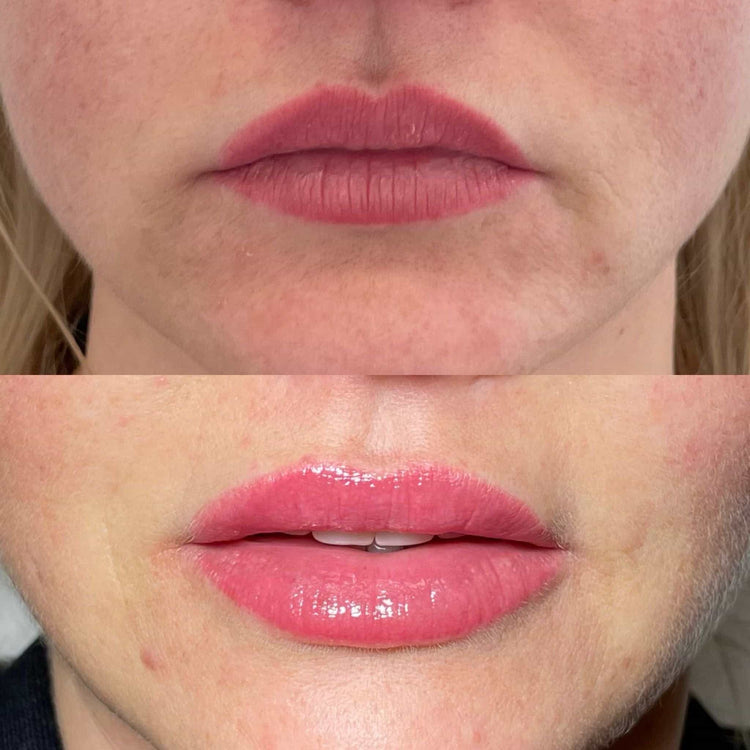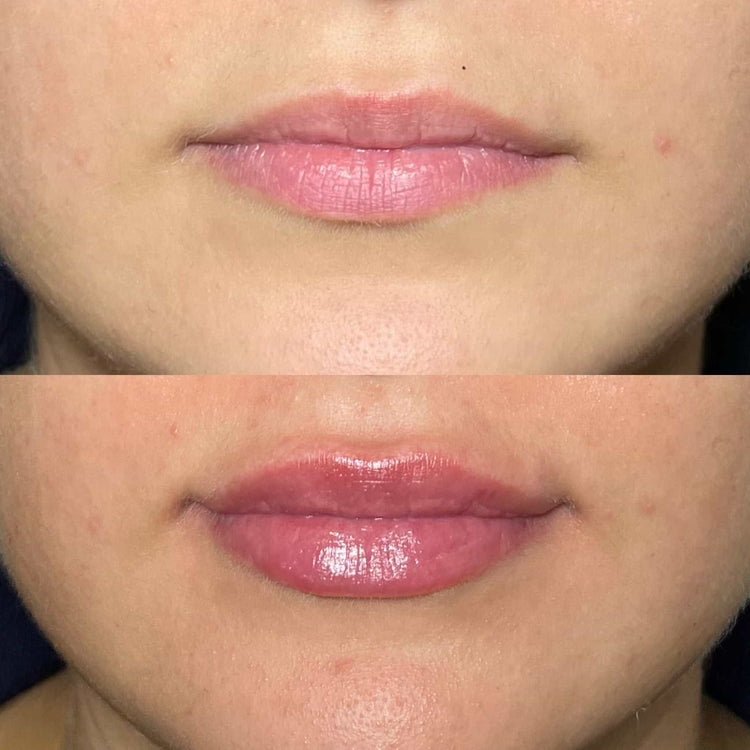Causes of Lip Filler Lumps and Bumps
Lip filler injections are a popular way to enhance lip size and shape, but they can sometimes result in unwelcome lumps or bumps. Understanding the causes behind these imperfections is key to addressing them effectively.
Improper Injection Technique
Improper injection technique is a leading cause of lip filler lumps and bumps. Injecting the filler too superficially or into an area with insufficient tissue volume can lead to visible lumps. Uneven distribution of the filler, whether it be over-injection in one area or under-injection in another, can also create bumpy contours.
Filler Migration
Another common cause is the body’s natural immune response to the filler material. Some individuals may experience inflammation and granuloma formation, which can manifest as small lumps or bumps at the injection site. These reactions are typically temporary but can be persistent in some cases.

Filler migration occurs when the injected material moves from its intended location. This can happen due to various factors, including repeated facial movements, muscle contractions, or even gravity. When filler migrates, it can create uneven contours, lumps, or a “pillow effect” where the lips appear excessively plump.
Additionally, using an incompatible filler type or one that hasn’t been properly stabilized can increase the risk of migration.
Allergic Reaction
Allergic reactions to lip fillers are also possible, though they are less common than other causes. Some individuals may be sensitive to ingredients in the filler, leading to symptoms like itching, redness, swelling, or even hives. In severe cases, an allergic reaction can cause difficulty breathing or anaphylaxis, requiring immediate medical attention.
It’s crucial to choose a qualified and experienced injector who uses safe and reputable brands of lip fillers. Thorough communication with your injector about your medical history and any allergies is essential to minimize the risk of complications.
Infection

Improper injection technique is a leading cause of lip filler lumps and bumps. Injecting the filler too superficially or into an area with insufficient tissue volume can lead to visible lumps. Uneven distribution of the filler, whether it be over-injection in one area or under-injection in another, can also create bumpy contours.
Another common cause is the body’s natural immune response to the filler material. Some individuals may experience inflammation and granuloma formation, which can manifest as small lumps or bumps at the injection site. These reactions are typically temporary but can be persistent in some cases.
Filler migration occurs when the injected material moves from its intended location. This can happen due to various factors, including repeated facial movements, muscle contractions, or even gravity. When filler migrates, it can create uneven contours, lumps, or a “pillow effect” where the lips appear excessively plump.
Additionally, using an incompatible filler type or one that hasn’t been properly stabilized can increase the risk of migration.
Allergic reactions to lip fillers are also possible, though they are less common than other causes. Some individuals may be sensitive to ingredients in the filler, leading to symptoms like itching, redness, swelling, or even hives. In severe cases, an allergic reaction can cause difficulty breathing or anaphylaxis, requiring immediate medical attention.
Home Remedies for Lip Filler Lumps and Bumps
Lip filler lumps and bumps are a common concern following injections. These imperfections can be caused by a variety of factors, including improper injection technique, the body’s immune response to the filler, filler migration, and allergic reactions.
Applying Warm Compresses
Applying warm compresses is a simple home remedy that may help soften lumps or bumps associated with lip fillers.
Warmth can increase blood flow to the area, potentially aiding in the absorption of the filler and reducing inflammation.
To use this remedy, gently apply a warm compress to the affected area for 10-15 minutes at a time, several times a day.
Gentle Massage
Gentle massage can also be helpful in addressing lip filler lumps and bumps.
- Massage with your fingertips can help to redistribute the filler, making it more evenly distributed throughout the lips.
- This can reduce the appearance of lumps and create a smoother contour.
However, it’s important to be very gentle when massaging the area around lip fillers, as excessive pressure could cause further displacement or damage.
Using Hyaluronidase
Hyaluronidase is an enzyme that breaks down hyaluronic acid, the main ingredient in many lip fillers. It can be used to dissolve lumps and bumps associated with lip filler injections.
Hyaluronidase is typically administered by a qualified medical professional through a series of small injections directly into the affected area.
The enzyme works by breaking down the hyaluronic acid, allowing the filler material to be more evenly distributed or completely dissolved.
It’s important to note that hyaluronidase is not a home remedy and should only be administered by a licensed medical professional.
Professional Treatments for Lip Filler Lumps and Bumps
Lip filler lumps and bumps are common concerns following injections, arising from various factors such as improper injection technique, immune response to the filler, filler migration, or allergic reactions.
Dissolving the Filler with Hyaluronidase
Lip filler lumps and bumps are a common concern after injections, often caused by improper injection technique, the body’s immune response to the filler, filler migration, or allergic reactions.
Hyaluronidase is an enzyme that breaks down hyaluronic acid, the main component of many lip fillers. It can be injected directly into the affected area by a qualified medical professional to dissolve lumps and bumps.

Hyaluronidase works by breaking down the hyaluronic acid, allowing for more even filler distribution or complete dissolution.
Laser Therapy
Laser therapy can be an effective treatment for addressing lip filler lumps and bumps. Different types of lasers may be used depending on the specific issue being treated.
Fractional lasers, which create tiny, controlled micro-injuries in the skin, can stimulate collagen production and improve the texture and appearance of uneven contours caused by filler migration or granuloma formation.
Ablative lasers, such as CO2 lasers, remove the top layer of skin, allowing for more dramatic resurfacing and smoothing of the lips.
Microneedling
Lip filler lumps and bumps are a common concern following injections. These imperfections can be caused by a variety of factors, including improper injection technique, the body’s immune response to the filler, filler migration, and allergic reactions.
Hyaluronidase is an enzyme that breaks down hyaluronic acid, the main ingredient in many lip fillers. It can be used to dissolve lumps and bumps associated with lip filler injections.
Hyaluronidase is typically administered by a qualified medical professional through a series of small injections directly into the affected area.
The enzyme works by breaking down the hyaluronic acid, allowing the filler material to be more evenly distributed or completely dissolved.
It’s important to note that hyaluronidase is not a home remedy and should only be administered by a licensed medical professional.
Microneedling can be used as a treatment option for lip filler lumps and bumps, but it’s essential to consult with a qualified dermatologist or plastic surgeon before undergoing this procedure.
Microneedling involves using fine needles to create tiny punctures in the skin, which stimulates collagen production and improves skin texture.
In the context of lip fillers, microneedling can help to break down lumps or bumps by dispersing the filler more evenly and promoting absorption. It may also reduce the appearance of any scarring or discoloration that may result from filler migration or inflammation.
It’s crucial to find a qualified practitioner who has experience performing microneedling on lips, as improper technique can lead to bruising, bleeding, or infection.
Learn more about lip injections and how Dr. Laura Geige can help at It’s Me & You Clinic
- Why Do My Marionette Lines Look Worse After Fillers? - November 10, 2025
- What Is The Best Procedure For Neck Tightening? - November 7, 2025
- What Are The Best CBD Gummies For Mental Clarity And Focus? - November 5, 2025
